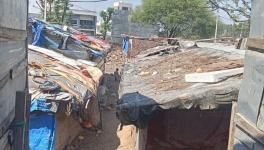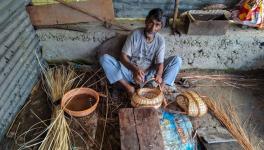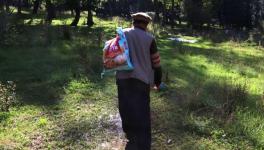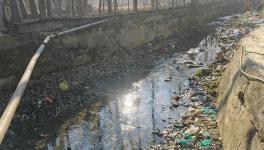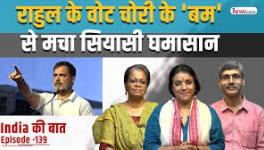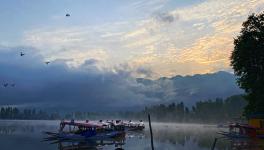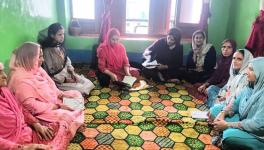Grappling with Myriad Problems, Does J&K Really Need Delimitation?
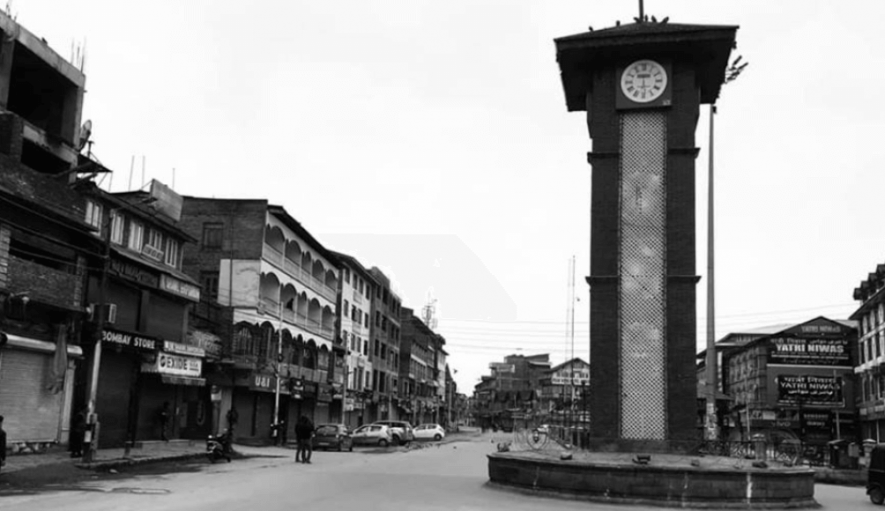
File Photo.
Ever since Prime Minister Narendra Modi assumed office, Jammu and Kashmir continued to remain a centrepiece which was used to attract support from across the nation. After scrapping its special status, delimitation for the area has been among one of the top priorities for the Government. The process has been set into motion with the formation of a Delimitation Commission headed by former Supreme Court Judge Ranjana Prakash Desai. It has been over seven months since the special status of Jammu and Kashmir was done away with and two Union Territories, namely Jammu & Kashmir (J&K) and Ladakh, were carved out of the erstwhile state.
Owing to the recent structural change, the delimitation of Jammu and Kashmir as a Union Territory will exclude Ladakh. Delimitation is, simply, a process of redrawing constituencies or redrawing the boundaries of various Lok Sabha and Assembly constituencies based on the most recent Census. According to Article 82 of the Constitution, the Parliament is empowered to delimit Lok Sabha and Assembly constituencies after every Census exercise.
If one goes by the Centre’s narrative for J&K, delimitation has been hailed as a process aimed to end the political hegemony of Kashmir over Jammu. In the recently passed J&K Reorganisation Act, it has been said that seven more seats will be added to the Assembly which has 83 seats at present, excluding the four seats held by Ladakh. With this, the total number of seats will be increased from 107 to 114, including the 24 seats for Pakistan-occupied Kashmir.
The last delimitation in J&K had taken place in 1995 when the erstwhile state was under President’s rule. The exercise was conducted by (Retd.) Justice K.K Gupta Commission. In 2002, keeping in line with the rest of India, the Farooq Abdullah government had frozen delimitation till 2026, by amending the J&K Representation of People’s Act, 1957 and Section 47(3) of the Constitution of Jammu and Kashmir.
But it is not that this cannot be changed. If the need arises, the delimitation process can start before 2026 on the advice of the Governor.
On the basis of the 2011 Census?
According to the 2011 census, the population of the Jammu region is 53,78,538, which amounts to 42.89% of the state's population. Jammu is spread over 26,293 square kilometers i.e. 25.93% of the area the erstwhile state. There are a total of 37 Assembly seats from Jammu. Against this number, Kashmir, with a population of 68,88,475, has 54.93% of the earlier J&K's population. The area of the Kashmir division is 15,948 square kilometers, which amounts to 15.73% of the total area. A total of 46 Members of Legislative Assembly (MLAs) are elected from here. The Census took place in 2011, at a time when Kashmiri Pandits had already migrated to Jammu.
Simply speaking, Kashmir’s area is less than that of Jammu while its population is more. Any party needs 44 seats to form a Government in the Jammu and Kashmir Legislative Assembly. It has been argued that the Kashmir Valley dominates the Assembly with 46 seats.
Bypassing the Census, the right-wing BJP has been tapping the representation of the minorities and marginalised groups which are settled in Jammu, which are displaced families from Pakistan-occupied-Kashmir and Scheduled Tribes in the state. Scheduled Tribes, who account for 11.9% of the population, are largely nomadic Muslim tribes who keep vacillating between Kashmir in the summer and Jammu during winter.
With the BJP talking about political representation of marginalised groups, it must be noted that Scheduled Tribes and Other Traditional Forest Dwellers (Recognition of Forest Rights) Act, 2006 (also known as the Forest Rights Act) has not been implemented in the state. The Central Government had promised that the Forest Rights Act (FRA) would come into force after the removal of Article 370.
Tribal activists and researchers have argued that they need FRA more than political representation. Under the Forest Rights Act, traditional forest dwellers are protected against forced displacements and have other rights as well, which include grazing rights, access to water resources and access to forest products.
Meanwhile, there are 24 seats lying vacant for representatives from Pakistan-occupied Kashmir. Those displaced from POK, who are settled in Jammu, are already considered as permanent residents and they have been voting for representatives from their areas. Moreover, in the months leading up to the Lok Sabha elections in 2019, the displaced families from POK had expressed their disappointment with the BJP by fielding their own candidates. The refugees from West Pakistan have not been given citizenship as yet.
Speaking about the delimitation and how BJP would use it for its own advantage, Anuradha Bhasin, Executive Editor of Kashmir Times said: “What I have heard is that delimitation will take into account the territories, especially the hilly areas of Chenab valley, Rajouri, Poonch where there is scattered population. If this happens, it is unprecedented. Nowhere has the territory been taken as the criteria for delimitation. The other is that they might use the 25 seats that were reserved for POK refugees.”
Political implications:
In recent years, the strain between Jammu and Kashmir has been growing. By resorting to delimitation, is the BJP fanning those strains? Since the party has assumed power, they have been drumming up support of Hindus from Jammu in the name of alleged discrimination faced by the majority Hindu populace. A narrative has been created for the need to have a Hindu Chief Minister. Will delimitation open a door for one?
It can be stated that by increasing seats in Jammu region and reducing the seats of Kashmir, the electoral equation can be changed in such a way that the political dominance of Kashmir would be reduced. Consequently, Jammu and Kashmir could then be governed by forces emanating from Jammu. As a result, Jammu and Kashmir would then be directly controlled by the Central Government rather than from Kashmir.
While Jammu and Kashmir is still grappling with a major policy shift, simultaneous statelessness, an economy that has nosedived, unemployment, the recently revived Internet and a growing enchantment and anxiety among the population. Is delimitation really the need of the hour?
Get the latest reports & analysis with people's perspective on Protests, movements & deep analytical videos, discussions of the current affairs in your Telegram app. Subscribe to NewsClick's Telegram channel & get Real-Time updates on stories, as they get published on our website.









